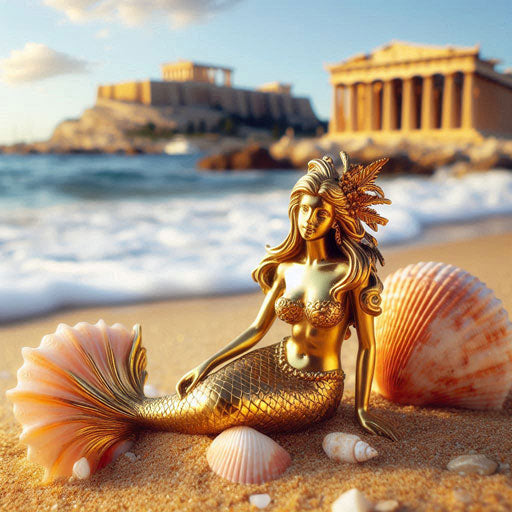Table of Contents
- Introduction
- Origins and Mythological Background
- Description of Mermaids
- Mermaids and Sirens: A Mythological Conflation
- Mermaids in Greek Literature
- Alexander the Great and His Sister Thessalonike
- Cultural Impact and Legacy
- Conclusion
Introduction
Mermaids, known for their captivating beauty and mysterious nature, are fascinating creatures in various mythologies, including Greek mythology. This blog post explores the origins, characteristics, and cultural significance of mermaids in Greek mythology, delving into their representation and legacy.

Origins and Mythological Background
The half-woman, half-fish beings in Greek mythology have their roots in ancient myths and legends that celebrated the sea's beauty and danger. The Greeks, with their deep connection to the sea, crafted stories of these enchanting creatures, intertwining them with the lore of gods, goddesses, and marine deities.
Description of Mermaids
Half-woman, half-fish beings, often referred to as mermaids, are mythical creatures that epitomize the enchanting and mysterious allure of the ocean. They possess the upper body of a human female, characterized by captivating beauty, flowing hair, and often a melodic voice. Below the waist, their form seamlessly transforms into the sleek, powerful tail of a fish, complete with shimmering scales that glisten in the water. This dual nature allows them to navigate the aquatic realm with grace and agility.
Mermaids are renowned for their beguiling charm and otherworldly allure. In various myths, they are depicted as both benevolent and malevolent beings. They are known to possess a range of supernatural abilities, including the power to enchant humans with their songs, manipulate the seas, and communicate with marine creatures. Their presence often evokes themes of seduction, mystery, and the unknown depths of the ocean.

Mermaids and Sirens: A Mythological Conflation
The Tale of the Sirens
One of the most famous groups of mermaid-like creatures in Greek mythology are the Sirens. These mythical beings are often depicted as having the body of a bird and the head of a woman, though later interpretations merged them with mermaids. The Sirens were notorious for their enchanting songs that lured sailors to their doom.
Sirens vs. Mermaids
While Sirens and mermaids are distinct in many cultures, their attributes often overlap in Greek mythology. The Sirens' transformation into fish-tailed beings in later myths contributed to the modern mermaid image.
Mermaids in Greek Literature
Homer's "Odyssey"
In Homer's epic, "The Odyssey," the hero Odysseus encounters the Sirens during his journey home. Warned by the sorceress Circe, Odysseus plugs his crew's ears with beeswax and has himself tied to the mast to resist their song, showcasing the deadly power of these creatures.
Later Literary Works
Subsequent Greek literature and mythology continued to explore the theme of mermaids and Sirens, blending their characteristics and solidifying their place in Greek mythos as both enchanting and dangerous.
Alexander the Great and His Sister Thessalonike
One of the lesser-known legends involving mermaids in Greek mythology concerns Alexander the Great and his sister, Thessalonike. According to folklore, after Alexander the Great's death, his sister Thessalonike was transformed into a mermaid. She roamed the seas, and whenever she encountered a ship, she would ask the sailors one question: "Is King Alexander alive?"
The correct answer to this question was, "He lives and reigns and conquers the world." If the sailors gave this response, she would calm the seas and allow the ship to pass safely. However, if they gave any other answer, she would become enraged and summon a storm, leading to the ship's destruction. This legend underscores the enduring influence of Alexander the Great and the mystical elements often associated with mermaids in Greek culture.
Cultural Impact and Legacy
Transition to Benevolent Figures
Over centuries, the depiction of mermaids evolved from the ominous Sirens of Greek mythology to the more benign and enchanting figures found in modern folklore and popular culture.
Mermaids Today
Today, mermaids are a staple in literature, movies, and art, often symbolizing mystery, beauty, and the unexplored depths of the ocean. This modern representation still holds traces of their mythological roots in Greek culture.
Conclusion
Mermaids in Greek mythology are complex and multifaceted beings. From the deadly allure of the Sirens to the captivating imagery in ancient art, these mythical creatures have evolved over millennia. They continue to enchant and inspire, bridging the ancient and modern worlds through their timeless tales.

Interested In Greek Mythology ? Visit our blog here

